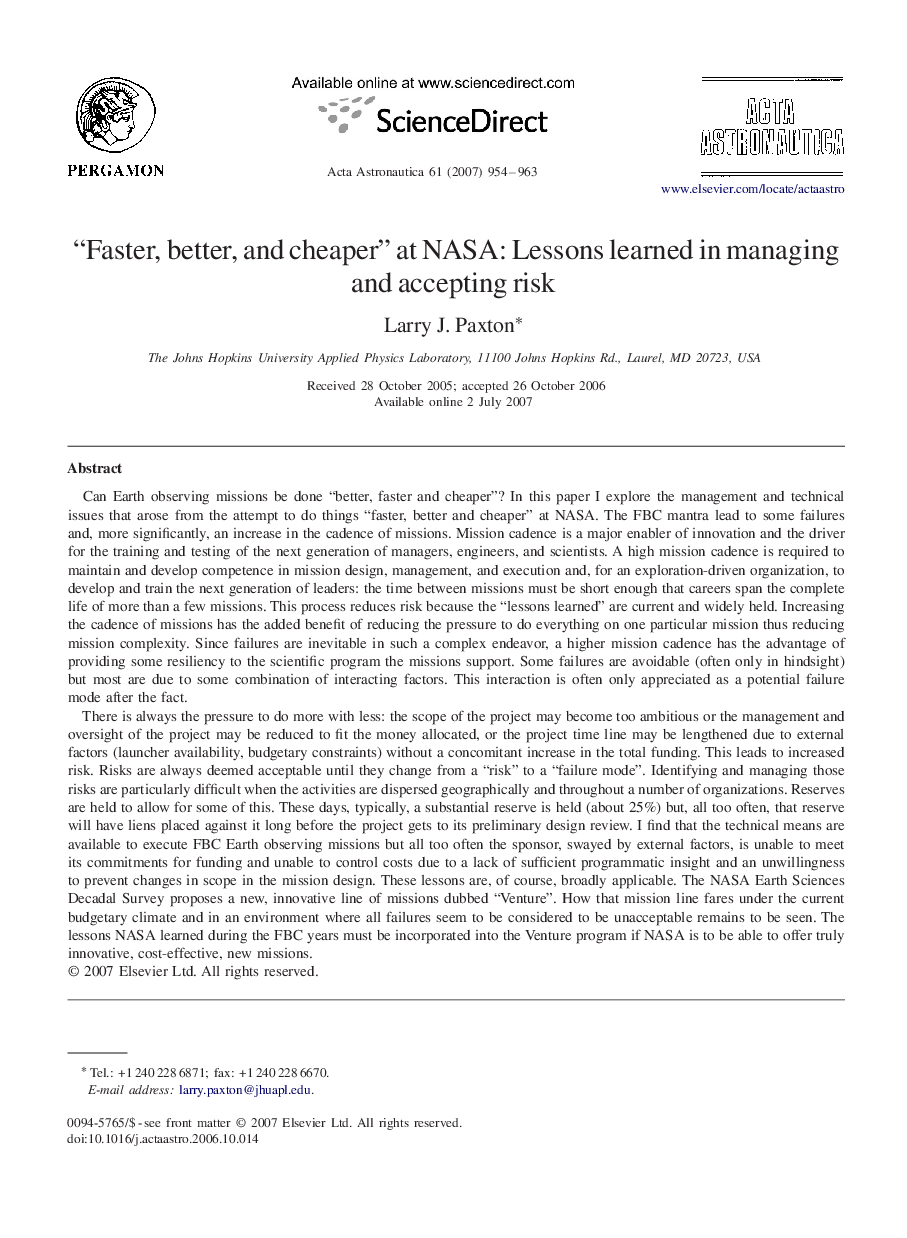| کد مقاله | کد نشریه | سال انتشار | مقاله انگلیسی | نسخه تمام متن |
|---|---|---|---|---|
| 1716973 | 1013420 | 2007 | 10 صفحه PDF | دانلود رایگان |

Can Earth observing missions be done “better, faster and cheaper”? In this paper I explore the management and technical issues that arose from the attempt to do things “faster, better and cheaper” at NASA. The FBC mantra lead to some failures and, more significantly, an increase in the cadence of missions. Mission cadence is a major enabler of innovation and the driver for the training and testing of the next generation of managers, engineers, and scientists. A high mission cadence is required to maintain and develop competence in mission design, management, and execution and, for an exploration-driven organization, to develop and train the next generation of leaders: the time between missions must be short enough that careers span the complete life of more than a few missions. This process reduces risk because the “lessons learned” are current and widely held. Increasing the cadence of missions has the added benefit of reducing the pressure to do everything on one particular mission thus reducing mission complexity. Since failures are inevitable in such a complex endeavor, a higher mission cadence has the advantage of providing some resiliency to the scientific program the missions support. Some failures are avoidable (often only in hindsight) but most are due to some combination of interacting factors. This interaction is often only appreciated as a potential failure mode after the fact.There is always the pressure to do more with less: the scope of the project may become too ambitious or the management and oversight of the project may be reduced to fit the money allocated, or the project time line may be lengthened due to external factors (launcher availability, budgetary constraints) without a concomitant increase in the total funding. This leads to increased risk. Risks are always deemed acceptable until they change from a “risk” to a “failure mode”. Identifying and managing those risks are particularly difficult when the activities are dispersed geographically and throughout a number of organizations. Reserves are held to allow for some of this. These days, typically, a substantial reserve is held (about 25%) but, all too often, that reserve will have liens placed against it long before the project gets to its preliminary design review. I find that the technical means are available to execute FBC Earth observing missions but all too often the sponsor, swayed by external factors, is unable to meet its commitments for funding and unable to control costs due to a lack of sufficient programmatic insight and an unwillingness to prevent changes in scope in the mission design. These lessons are, of course, broadly applicable. The NASA Earth Sciences Decadal Survey proposes a new, innovative line of missions dubbed “Venture”. How that mission line fares under the current budgetary climate and in an environment where all failures seem to be considered to be unacceptable remains to be seen. The lessons NASA learned during the FBC years must be incorporated into the Venture program if NASA is to be able to offer truly innovative, cost-effective, new missions.
Journal: Acta Astronautica - Volume 61, Issue 10, November 2007, Pages 954–963